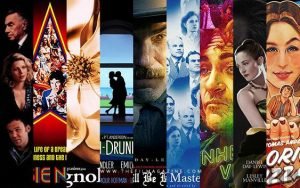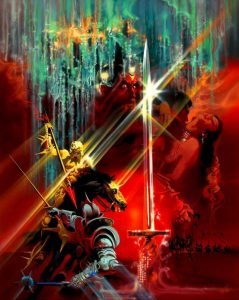Discovering the Timeless Brilliance of Yasujirō Ozu’s Films
If you’re familiar with the world of cinema, then you’ve undoubtedly heard of Yasujirō Ozu, one of the most respected and revered Japanese filmmakers of all time. His films, which spanned from the 1920s to the 1960s, are known for their meticulous attention to detail, their subtle humor, and their poignant explorations of family dynamics and societal norms. In this article, we’ll be taking a closer look at some of Ozu’s most notable works, exploring what makes them so timeless and why they continue to inspire filmmakers today.
If you’re familiar with the world of cinema, then you’ve undoubtedly heard of Yasujirō Ozu, one of the most respected and revered Japanese filmmakers of all time. His films, which spanned from the 1920s to the 1960s, are known for their meticulous attention to detail, their subtle humor, and their poignant explorations of family dynamics and societal norms. In this article, we’ll be taking a closer look at some of Ozu’s most notable works, exploring what makes them so timeless and why they continue to inspire filmmakers today.

Introduction to Yasujirō Ozu and his films
Yasujirō Ozu is a renowned Japanese filmmaker, known for his unique style and approach to cinema. He is widely regarded as one of the most important and influential filmmakers in Japanese history. Ozu’s films often explore themes of family, tradition, and the changing nature of Japanese society. His films are characterized by long takes, static camera shots, and an emphasis on dialogue and everyday moments. Ozu’s most famous works include “Tokyo Story,” “Late Spring,” and “An Autumn Afternoon.” Overall, his films are a must-watch for any cinephile interested in exploring the rich history of Japanese cinema.
Ozu’s minimalist style and use of static shots
Yasujirō Ozu’s films are known for their minimalist style and use of static shots. Ozu’s unique approach to filmmaking emphasizes stillness and contemplation, rather than flashy camera work or rapid editing. He often employs low camera angles and symmetrical compositions, creating a sense of balance and harmony within the frame. Ozu’s films are also notable for their attention to everyday details and the rhythms of daily life, capturing the nuances and subtleties of human behavior with a quiet and observant gaze. This minimalist style has made Ozu one of the most influential directors in the history of cinema, inspiring generations of filmmakers around the world.
Exploration of themes such as family, tradition, and societal changes
Yasujirō Ozu’s films are known for their exploration of themes such as family, tradition, and societal changes. Ozu’s movies provide a unique perspective on the traditional Japanese family structure and the impact of societal changes on it. Through his films, Ozu depicts the complexities of family relationships and the struggle to maintain traditional values in the face of rapid modernization. He often employs subtle and nuanced storytelling techniques to explore these themes, making his films a fascinating study for cinema lovers and those interested in Japanese culture. Ozu’s movies are a must-watch for anyone who wants to delve deeper into the intricacies of family dynamics and societal changes.

Ozu’s use of everyday objects and rituals as symbols
Yasujirō Ozu, one of the most renowned Japanese filmmakers, was known for his unique use of everyday objects and rituals as symbols in his films. In his works, Ozu often portrayed the mundane aspects of life as significant and meaningful, such as a teapot, a bicycle or a pair of shoes. These objects represent the simplicity and beauty of everyday life, highlighting the importance of small details that might be overlooked. Moreover, Ozu’s films often feature traditional Japanese rituals and customs, such as tea ceremonies or flower arranging, that convey a sense of cultural heritage and values. Through his use of such symbols, Ozu creates a deep connection between his characters and the audience, inviting us to reflect on the universal themes of love, loss, and family.
Ozu’s collaborations with actors such as Chishu Ryu and Setsuko Hara
Yasujirō Ozu’s filmography is characterized by his collaborations with actors such as Chishu Ryu and Setsuko Hara. Ryu appeared in almost all of Ozu’s films from the 1930s until the director’s death in 1963, and their partnership is considered one of the most fruitful in cinema history. Ryu’s performances were often understated and naturalistic, perfectly complementing Ozu’s minimalist style. Hara, on the other hand, was known for her emotive and expressive acting, which added depth to Ozu’s characters. Together, Ozu, Ryu, and Hara created some of the most timeless and poignant films in the history of Japanese cinema.
Analysis of Ozu’s famous “pillow shots”
Yasujirō Ozu’s films are known for their unique approach to storytelling, and one of his most famous techniques is the use of “pillow shots.” These are short, seemingly unrelated shots that are inserted between scenes, which break up the narrative flow and give the audience a moment to reflect on what they have just seen. In analyzing Ozu’s use of pillow shots, it becomes clear that he uses them to create a sense of atmosphere and to highlight the beauty in everyday objects and surroundings. By doing so, Ozu invites the audience to slow down and appreciate the small moments in life, rather than just focusing on the main plot.

Ozu’s influence on filmmakers such as Hou Hsiao-hsien and Wong Kar-wai
Yasujirō Ozu’s minimalist approach to filmmaking has had a profound impact on filmmakers such as Hou Hsiao-hsien and Wong Kar-wai. Both directors have cited Ozu as a major influence on their work, particularly his use of static shots, long takes, and emphasis on small, intimate moments over grand spectacle. Ozu’s ability to capture the essence of everyday life has inspired these filmmakers to infuse their own works with a similar sense of subtlety and understatement. While they each have their own unique style, the influence of Ozu can be seen in the way they approach storytelling and the way they frame their shots.
Discussion of Ozu’s post-war films and his commentary on Japan’s recovery
Yasujirō Ozu’s post-war films are a remarkable commentary on Japan‘s recovery after the Second World War. His movies captured the social and cultural changes that were taking place in Japan during that time period. Ozu’s films often depicted the struggles of middle-class families and their attempts to adapt to the rapidly changing society. His movies were marked by a unique style of storytelling and cinematography, which made them stand out from other films of that era. Ozu’s contributions to Japanese cinema have been invaluable, and his works continue to inspire filmmakers around the world.
Comparison of Ozu’s early silent films and his later talkies
Yasujirō Ozu’s early silent films and his later talkies have notable differences that reflect the evolution of the film industry during his career. In his early works, Ozu experimented with editing techniques and camera placement to create a unique visual style that focused on composition and framing. As he transitioned to sound, Ozu embraced a more naturalistic approach that utilized static camera shots and long takes to capture the subtleties of human behavior. Despite these changes, Ozu’s films remained consistent in their exploration of themes such as family, tradition, and the passing of time. Overall, both his silent and talkie films offer a poignant reflection on the human condition that has made Ozu a revered figure in the history of cinema.
Legacy of Yasujirō Ozu and his impact on cinema
Yasujirō Ozu is one of the most influential filmmakers in the history of cinema. He is widely regarded as a master of Japanese cinema, known for his unique style and unmistakable themes. His films often deal with family relationships, generational conflicts, and the tension between tradition and modernity. Ozu’s impact on cinema is still felt today, as his work has inspired countless directors around the world. His use of static camera shots, low-angle compositions, and long takes has been emulated by generations of filmmakers. Ozu’s legacy is a testament to the power of cinema to explore the human condition and capture the essence of life.
For more information about Yasujirō Ozu’s Films, including movie details, cast information, etc..
check out the filmaffinity page.



